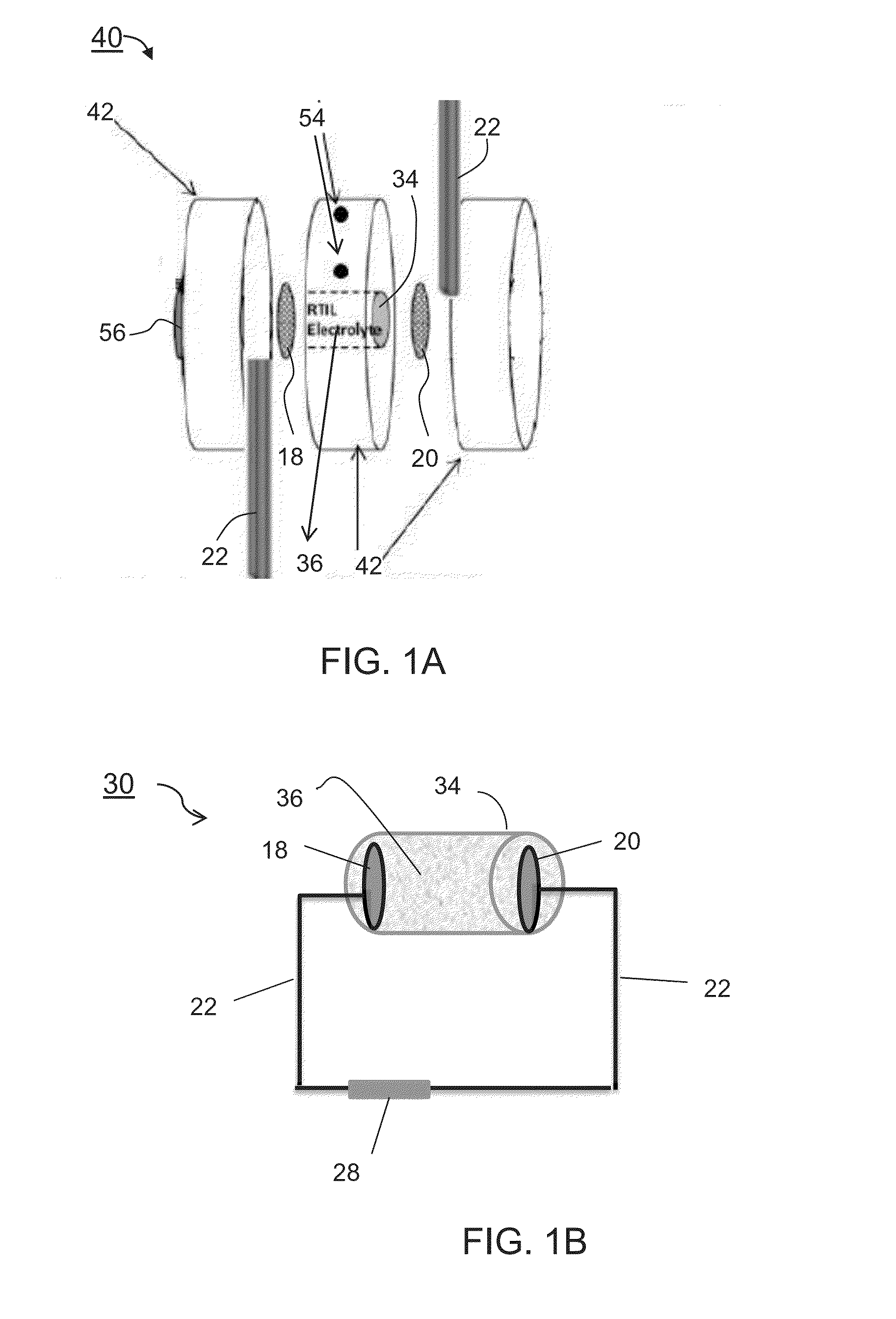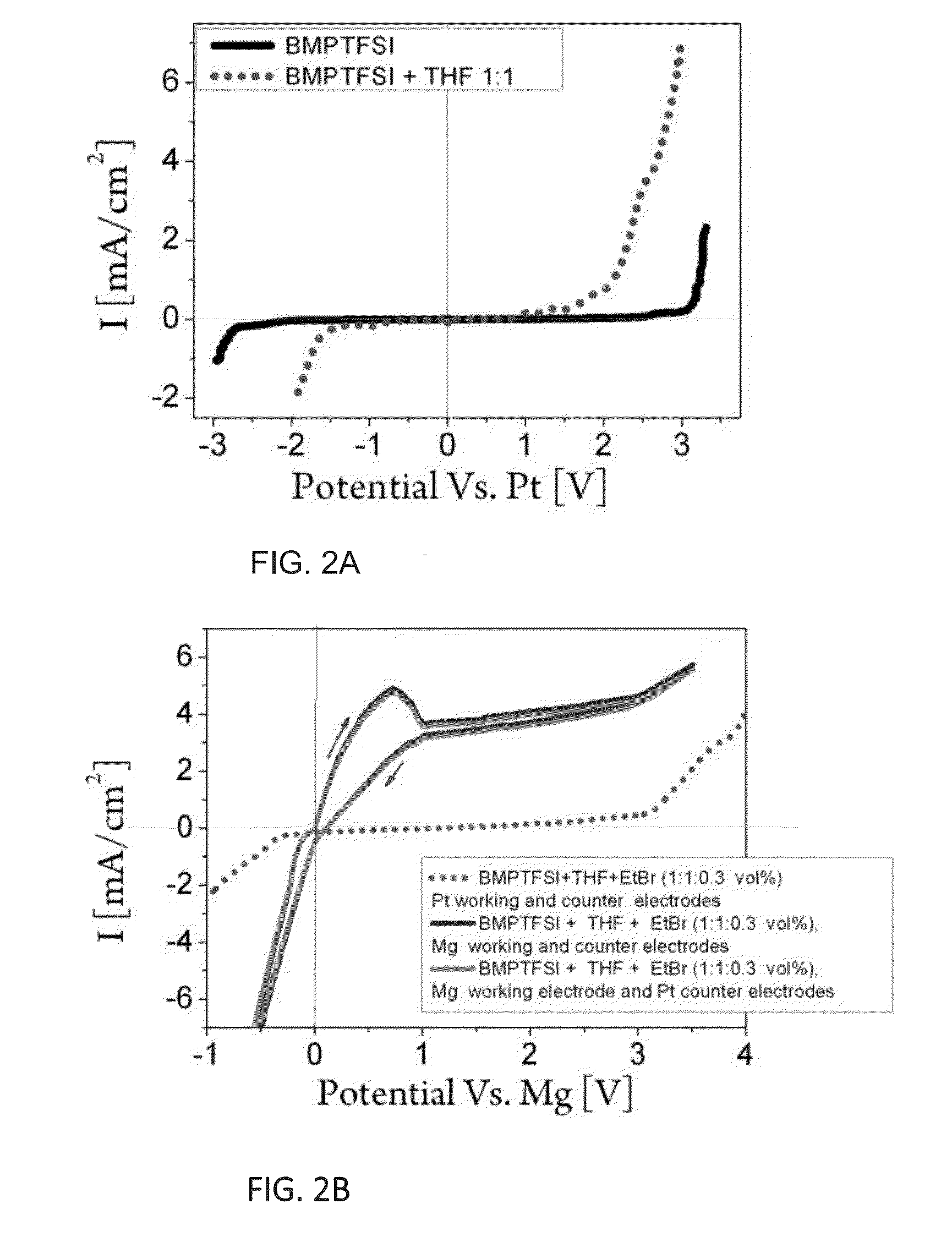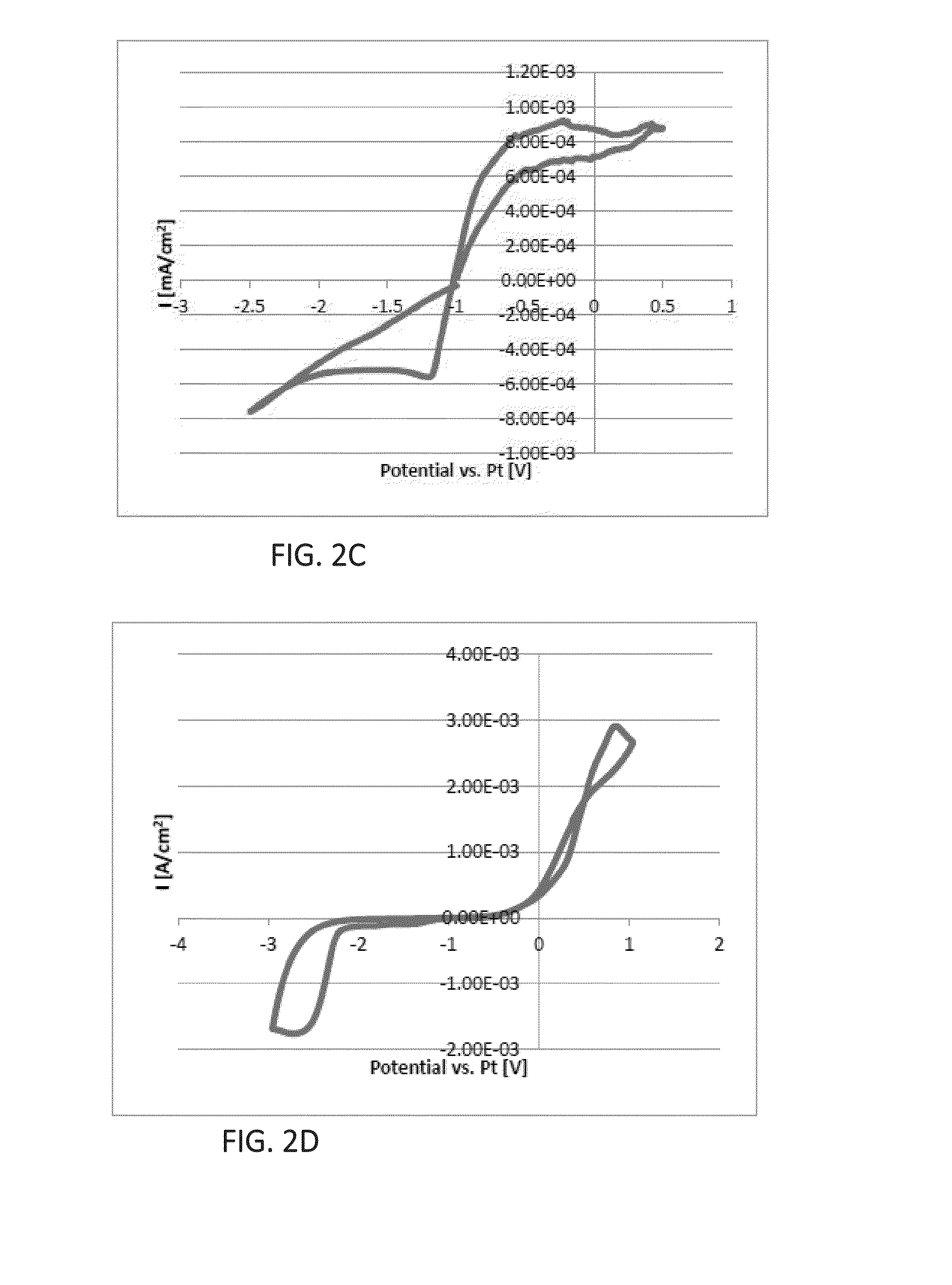Process of preparing grignard reagent
a technology of grignard and reagents, which is applied in the field of chemical synthesis, can solve the problems of low yield per unit time, difficult production of grignard reagents, and impair the reaction of mg-metal with organic halides
- Summary
- Abstract
- Description
- Claims
- Application Information
AI Technical Summary
Benefits of technology
Problems solved by technology
Method used
Image
Examples
example 1
[0304]The electrochemical windows of BMPTFSI and an electrolyte composed of BMPTFSI+THF in 1:1 volume ratio were determined by CV experiments using electrochemical cell as described hereinabove, having Pt working, reference and counter electrodes. The obtained data is presented in FIG. 2A and show that a particularly wide electrochemical window of about 5.5 [V] is observed for BMPTFSI. Such a wide electrochemical window is particularly required for processes which require dryness and use non-aqueous electrolytes, and indicates that the RTIL is advantageous as a stable electrolyte for the synthesis of GR, together with other general advantages such chemical and thermal stability, and low vapor pressure, as discussed hereinabove.
[0305]The presence of THF in the solution is intended for stabilizing the prepared Grignard reagent as well as for increasing electrolyte conductivity. It is observable from FIG. 2A that the addition of THF in 1:1 volume ratio to BMPTFSI narr...
example 2
Potentiostatic Process
[0316]The Potentiostatic Experiment:
[0317]Two pure magnesium electrodes were polished in a glove box (O2, H2O<1 ppm) and inserted in a cell containing an electrolyte as described in the materials and methods section hereinabove and illustrated in FIG. 1A.
[0318]In order to synthesize EtMgBr with a controlled concentration, a continuous constant potential of 0.2 [V] Vs. Mg reference electrode was applied to a cell utilizing Mg working and counter electrodes as described in Example 1 hereinabove, and using the electrolyte solution containing BMPTFSI+THF+EtBr, 1:1:0.3 vol %). The total charge passed through was calculated to be 0.805 [C].
[0319]The recorded potentiostatic (current transient) curve is presented in FIG. 4.
[0320]1H-NMR Analyses:
[0321]1H-NMR measurements were used in order to determine the molecular structure of the species, including the dissolved Mg, and to indirectly calculate the product concentration.
[0322]FIG. 5A presents 1H-NMR spectrum of the py...
example 3
Charge-Concentration Dependence
[0332]A relation between the charge transferred during the potentiostatic experiments and the final concentration of the obtained Grignard reagent was determined by applying a constant potential of 0.2 [V] Vs. Mg reference electrode at different time lengths to a number of cells, with each cell having a different value of total charge passing through it, as indicated in Table 1 below.
[0333]The different EtMgBr concentrations were calculated by taking the relative integration of the peak at (−1.39) ppm belonging to hydrogen on the “K” carbon in EtMgBr and the peak at 2.42 ppm belonging to hydrogen on the carbon “C” in the BMPTFSI cation (marked and presented in FIGS. 5A-C), as these two peaks are easily isolated.
[0334]In the RTIL reference solution seen in FIG. 6, it can be seen that the relative integration value is (2 / 8.51=0.235), and this value is calibrated to the known EtMgBr concentration in the same solution (0.6 M). As an example, for the 1H-NMR...
PUM
| Property | Measurement | Unit |
|---|---|---|
| boiling point | aaaaa | aaaaa |
| current density | aaaaa | aaaaa |
| temperature | aaaaa | aaaaa |
Abstract
Description
Claims
Application Information
 Login to View More
Login to View More - R&D
- Intellectual Property
- Life Sciences
- Materials
- Tech Scout
- Unparalleled Data Quality
- Higher Quality Content
- 60% Fewer Hallucinations
Browse by: Latest US Patents, China's latest patents, Technical Efficacy Thesaurus, Application Domain, Technology Topic, Popular Technical Reports.
© 2025 PatSnap. All rights reserved.Legal|Privacy policy|Modern Slavery Act Transparency Statement|Sitemap|About US| Contact US: help@patsnap.com



